A seasonal produce guide for the month of May, with tips on how to choose, store and prepare each ingredient! Plus, multiple recipes included for all 8 produce items!
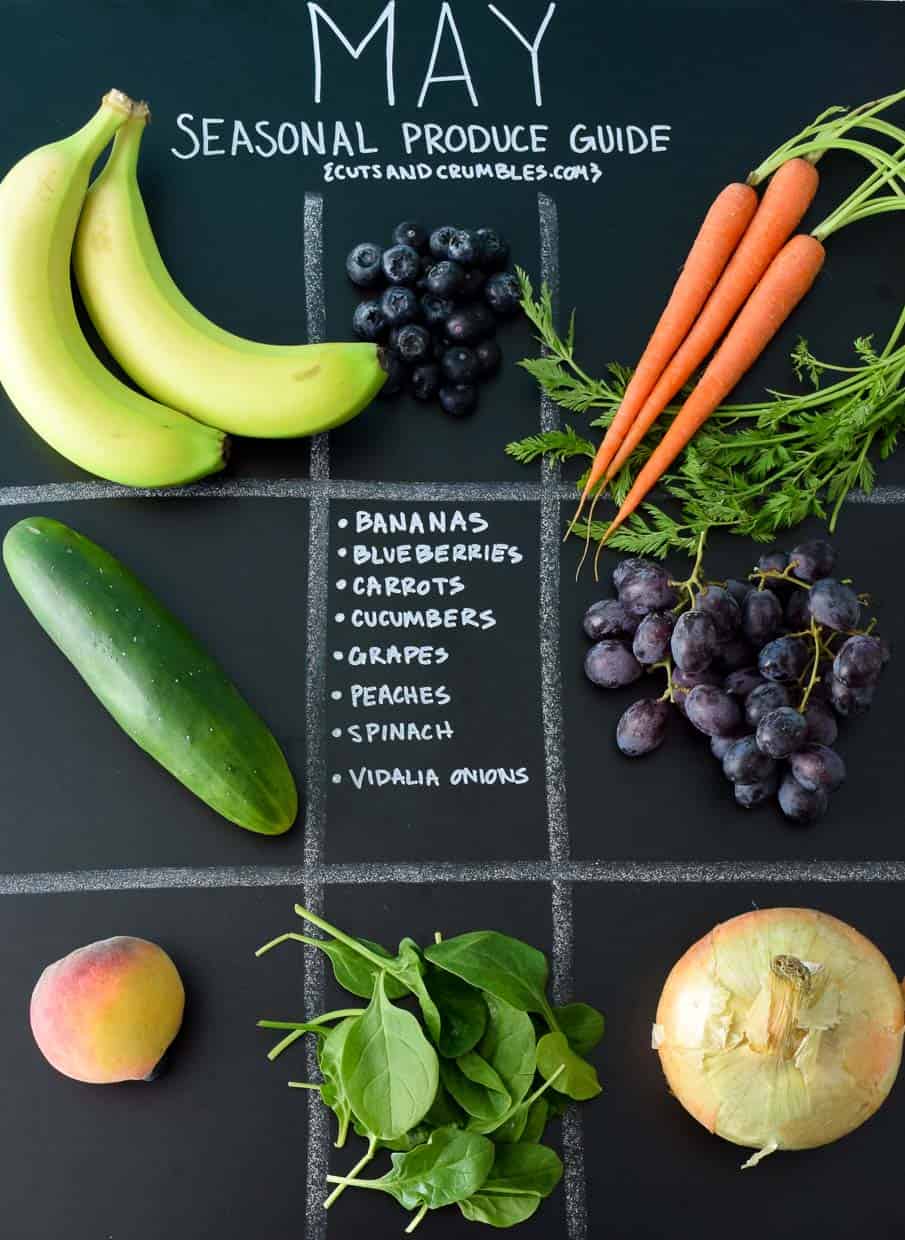
I'm not sure Ohio has received the memo yet that it's May. April showers are supposed to bring May flowers, right? So far April showers have just brought us a lot more showers.
I also had about 3 different fruits I wanted to use for this month's produce guide that are supposed to be in season but I went to two different grocery stores to try to find them and no one had them yet, so apparently, we're all still living in April over here!
These monthly seasonal produce guides are designed to help you determine exactly what foods are currently in season, how to choose them and store them, as well as give you some great recipe ideas from fellow food bloggers that incorporate these seasonal finds! There's no need to wait until summer to load up on fresh fruits and veggies, you can totally enjoy them right now!
Eating seasonally will help you save money while increasing the amount of flavor and nutrients you are obtaining from your food. So let's dig into our May Seasonal Produce Guide!
Bananas
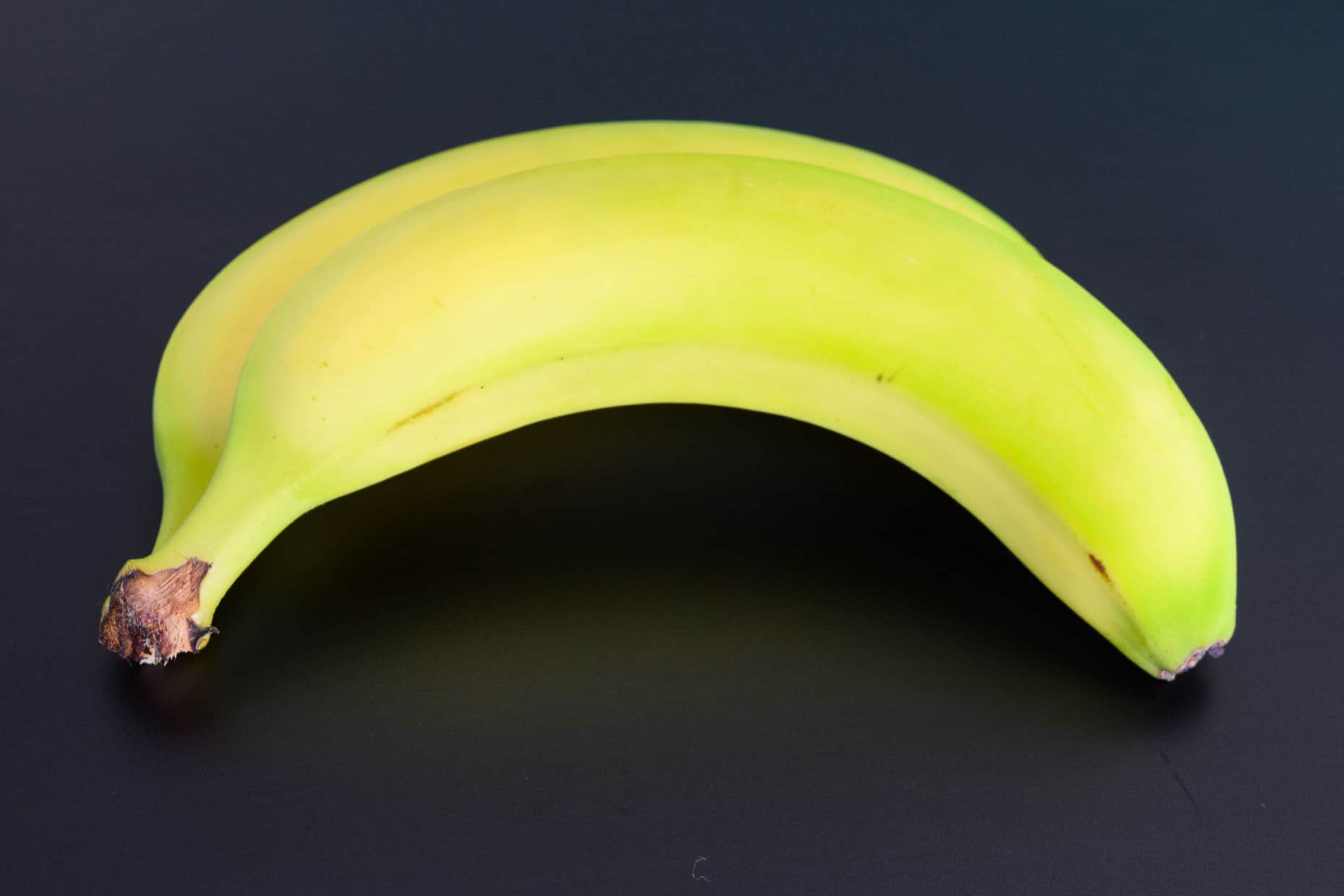
I LOVE bananas. And when I say that I really mean it, because I eat a banana every day for breakfast. I'm pretty particular with the ripeness of my nanners, though, so thankfully I have recipes like these banana "churros" to use up any overripe bananas that I don't get to!
- How to choose them:
- Choose bananas that are vibrant yellow in color with a little green on the ends.
- Choose bananas that are firm, with stems and peels that are intact.
- Choose based on the level of ripeness you desire. Green bananas will require a few days to ripen. Yellow bananas are ready to eat or should be eaten within the next day or two.
- Avoid bananas with any brown spots or bruises. A little brown speckling is okay, and is an indicator of ripeness and sweetness.
- How to store them:
- Store bananas at room temperature, out of direct sunlight, and ideally hanging on a banana tree to prevent bruising. If you don't have a banana tree, store in a bowl on your countertop.
- Do not detach the bananas from the bunch before storing. This will hasten the ripening process.
- Wrap the stems with plastic wrap. This will slow down the release of ethylene gas which will slow down the ripening process.
- Store next to unripened fruit. The bananas will help ripen the fruit and the unripened fruit will slow down the ripening process of the bananas.
- How to prepare them:
Blueberries
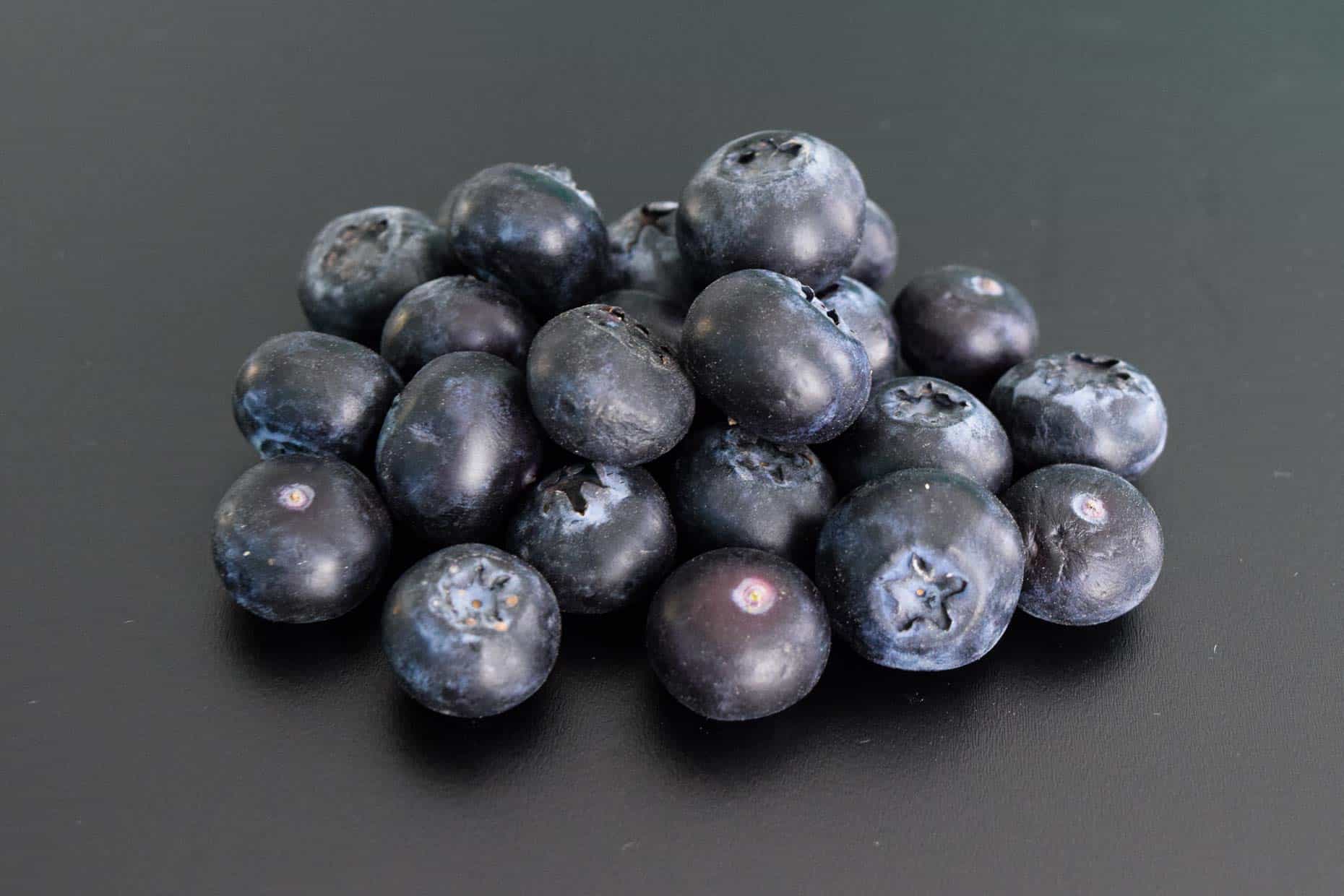
I mainly eat blueberries in muffins, because what's better than a warm blueberry muffin? But as you can see below, blueberries were meant for SO many other wonderful things! I might have to give that martini a whirl this weekend! (or on Wednesday...)
- How to choose them:
- Choose blueberries that are firm, dry, and plump.
- Choose blueberries with smooth skin that is deep purple in color and almost silvery in appearance.
- Avoid blueberries that look soft or shriveled or any containers that show signs of juice stains, which may be a sign of bruising.
- How to store them:
- Refrigerate in the original container or in a paper towel lined bowl for up to 10 days.
- Do not store in the crisper drawer, as you want air circulation to prevent molding.
- Do not wash before storing. Excess moisture will promote molding.
- How to prepare them:
Carrots
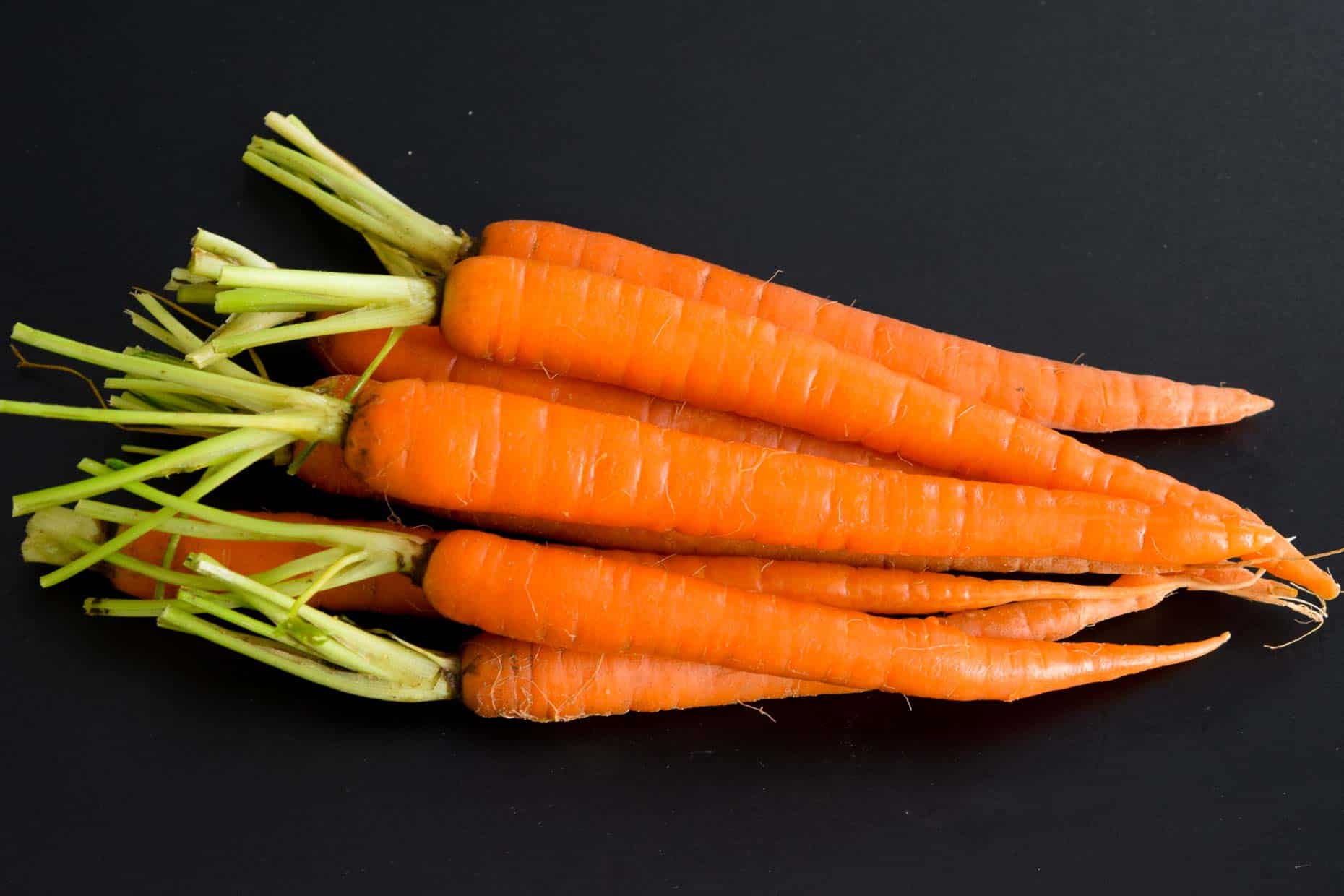
Good ol' carrots. We talked about these waaaayyy back in January but they never go out of style so we meet again! I have a certifiable obsession with roasted carrots that is only rivaled by my obsession with roasted brussels sprouts.
If you aren't a fan of them roasted, don't worry, because this versatile veggie has so many options you really can't get sick of them!
- How to choose them:
- Choose carrots that are firm and bright orange. Coloration should be uniform throughout the carrot and tops should be crisp and bright green.
- The skin should be smooth. Avoid choosing carrots that are pale, cracked, soft, shriveled or wilted.
- Choose medium sized carrots that taper at the ends, as the larger ones will be tough.
- How to store them:
- Cut the greens off to prevent moisture loss.
- You want to keep the carrots dry, so store in an open bag in your crisper drawer.
- Store away from fruit (some fruit produces ethylene gas which will age the carrots faster.)
- Carrots will last for a few weeks in the refrigerator.
- How to prepare them:
Cucumbers
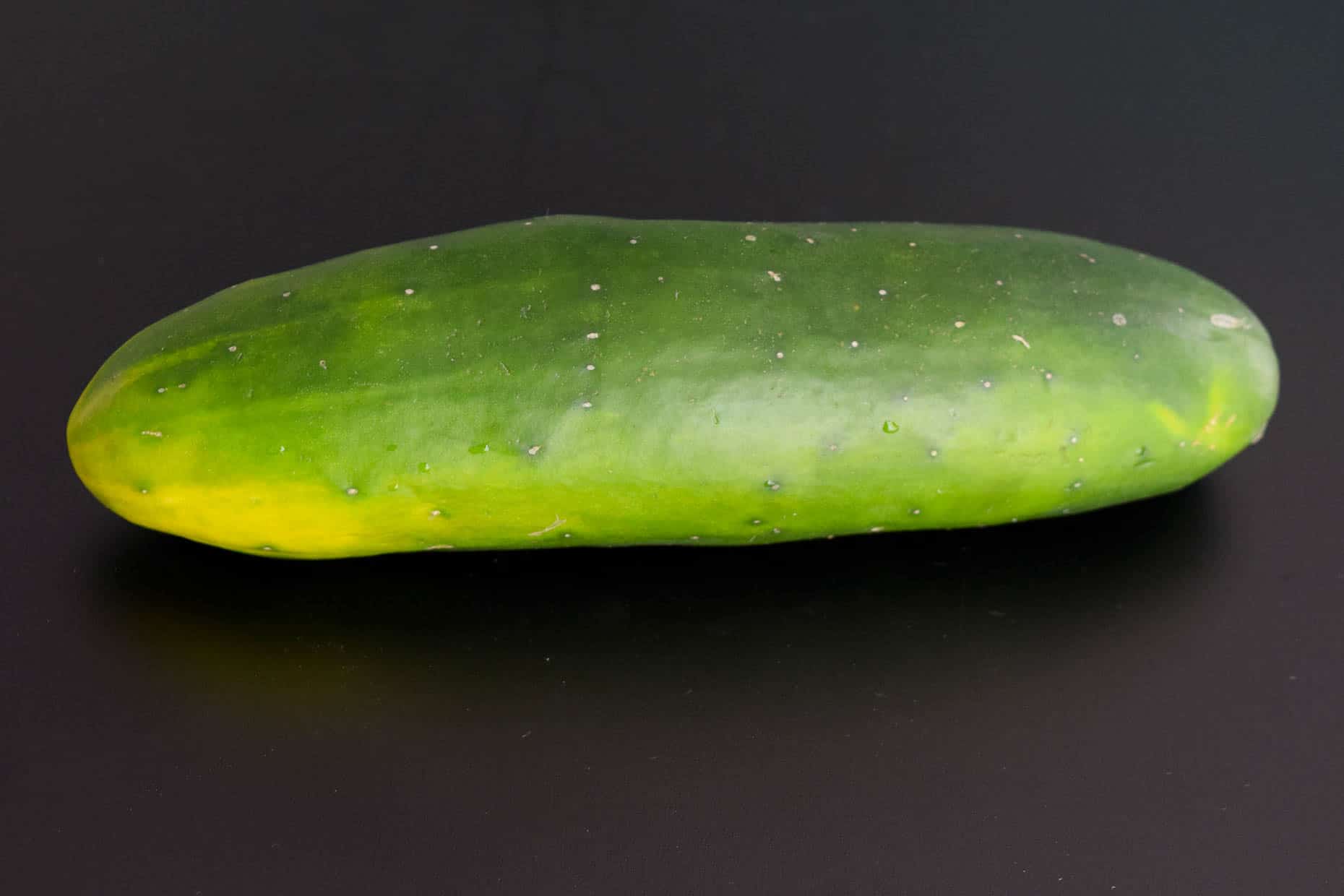
It took me about half my life to fully appreciate cucumbers. I take that back. It took me about half my life to even notice cucumbers.
I still have to read the signs in the grocery store to make sure I'm buying a cucumber because sometimes they just look like zucchinis that lost their hats to me. But the more I have them the more I am starting to appreciate them! (And quickly learn how they taste nothing like zucchini...)
- How to choose them:
- Choose cucumbers that are an even, dark green in color.
- Choose cucumbers that are firm and do not bend.
- Choose smaller cucumbers, as they will taste crisper and have smaller seeds.
- Avoid cucumbers that are wrinkled, blemished or have soft spots.
- How to store them:
- Do not store near bananas, tomatoes, or melons, as these will cause the cucumbers to yellow and ripen more quickly.
- Wrap loosely in plastic wrap and store in your refrigerator crisper drawer for 2-3 days.
- How to prepare them:
Grapes
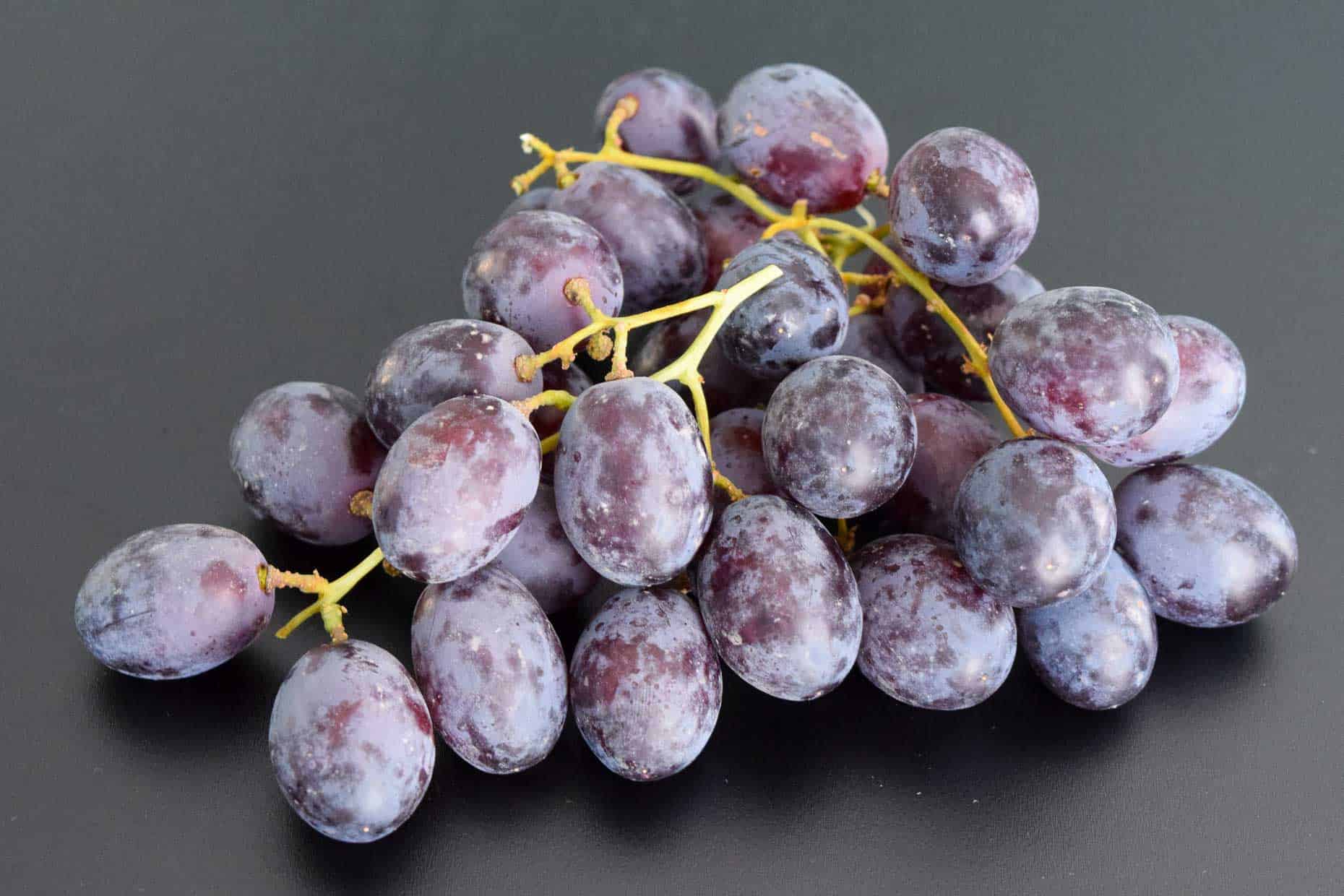
Nine times out of 10 I prefer my grapes in liquid form but for those times where I can't partake in my vino I love snacking on grapes. I've convinced myself they're a dessert and won't let anyone else tell me otherwise. I prefer red grapes as I find the green ones to be too tart, but to each their own!
- How to choose them:
- Choose grapes that are firm, plump and firmly attached to the stems. The stems should be green and flexible rather than brittle and dry.
- The white powder on grapes is safe and is called "bloom." This is a natural substance that protects the grapes from decay and moisture loss.
- Avoid grapes that are shriveled or that have excess moisture inside of the bag.
- How to store them:
- Store the grapes unwashed in their original bag in the refrigerator for 1-2 weeks.
- If removed from their original bag, store in a breathable, vented bag instead.
- How to prepare them:
Peaches
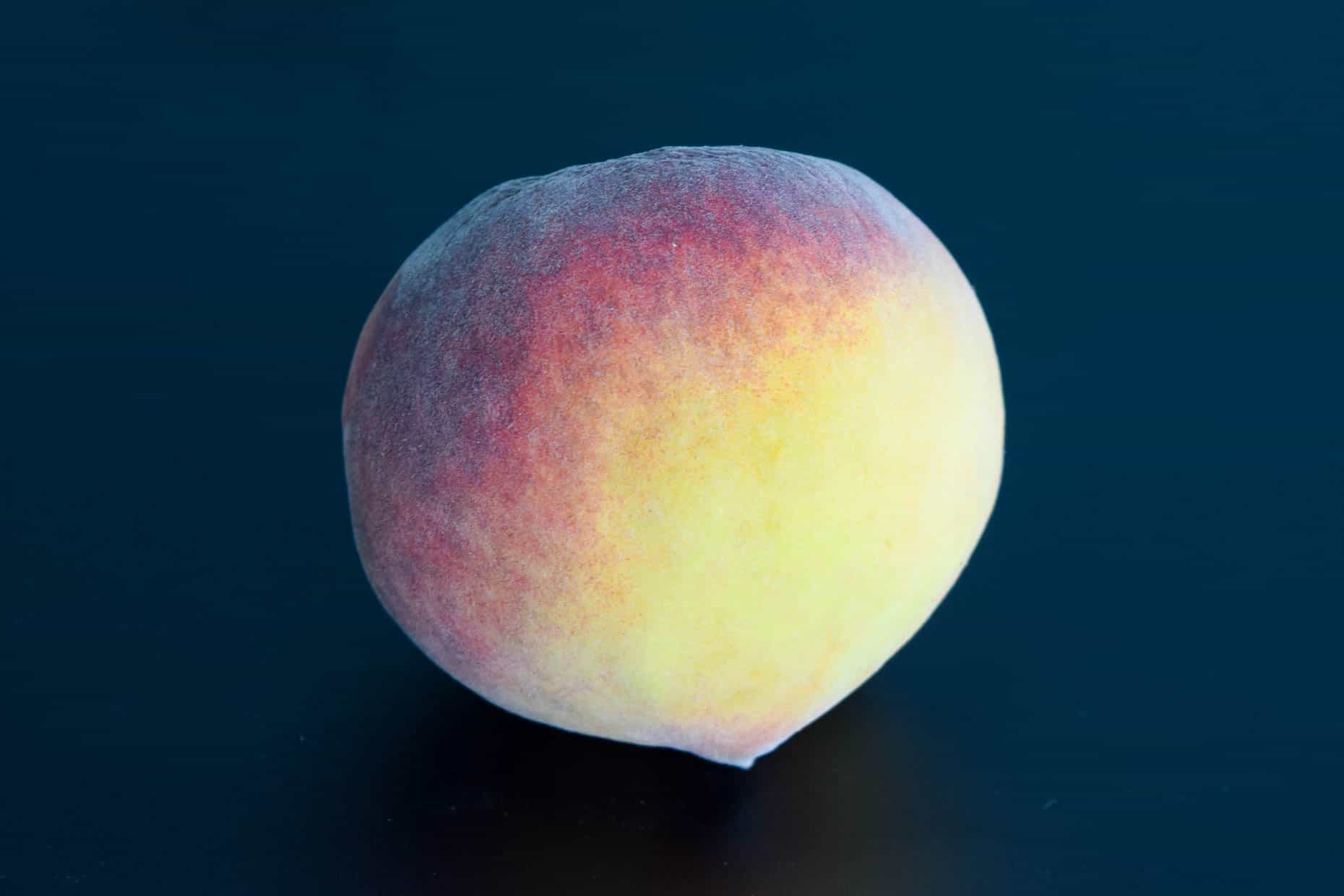
I have a confession to make. I bought the LAST peach that the grocery store had and I had to SCOUR the produce section to find it and was SO excited to find a slightly moldy, discarded peach sitting with the plums so that I could include it in this produce guide.
It looks pretty in this picture but seriously the top is beyond moldy. And I didn't care because I was so happy I found ONE PEACH. This is what food blogging does to a person, guys.
- How to choose them:
- Choose peaches with vibrant colors and a fragrant smell.
- Choose peaches that give a little when pressed. This is a sign that they are ripe and ready to be eaten. If they are still firm, they will need a few days to ripen.
- Avoid peaches with a green tinge to their color or with bruises, scratches, flat areas, or mold. (Unless you really need a peach for a food blogging photo 😛 )
- How to store them:
- Store on your countertop shoulder (stem) side down in a single layer to prevent bruising.
- If the peaches start to ripen before you get to eat them, you can put them in the refrigerator for a few days to slow down the ripening process. Just be sure to eat them before they start to wrinkle and dry out!
- How to prepare them:
Spinach
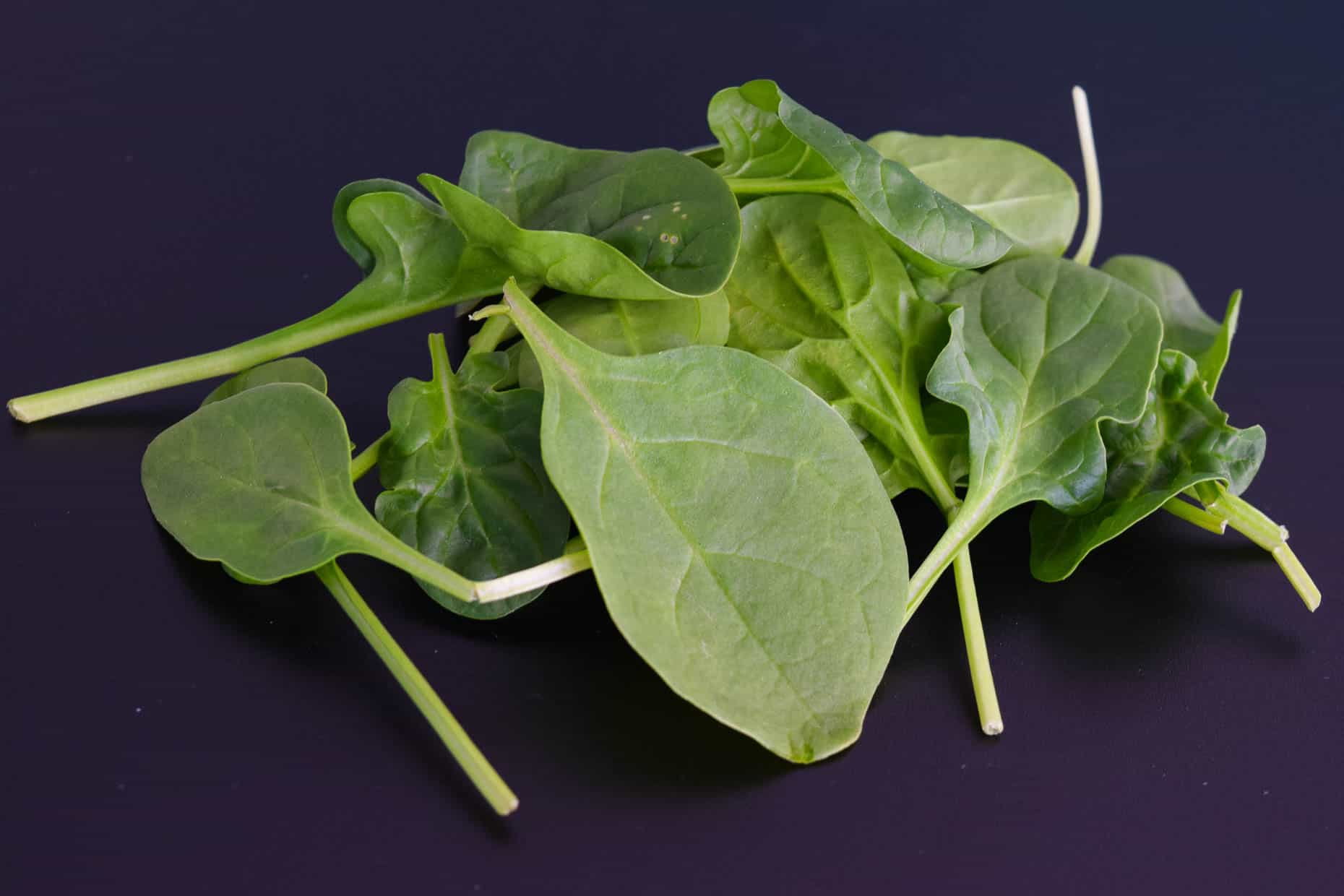
We talked a little bit about spinach in March when we covered spring greens, but spinach is such a staple in my house that I think it deserves its own box in our produce guide this month! Although the tips for choosing and storing are the same, we'll focus on some spinach specific recipes this time around!
- How to choose it:
- Choose spinach leaves that are green, crisp, vibrant and fresh. Avoid leaves that are wilted, browning, or yellowed.
- Avoid spinach that looks slimy, moldy or appears to have insect damage.
- When purchasing bagged spinach, avoid bags with too much excess moisture, as this can cause rotting.
- How to store it:
- Store in the refrigerator and keep dry. Storing in a plastic bag wrapped in a paper towel will help absorb excess moisture.
- Spinach should be eaten within about 3-5 days but can last up to 2 weeks in the refrigerator if stored properly.
- How to prepare it:
Vidalia Onions
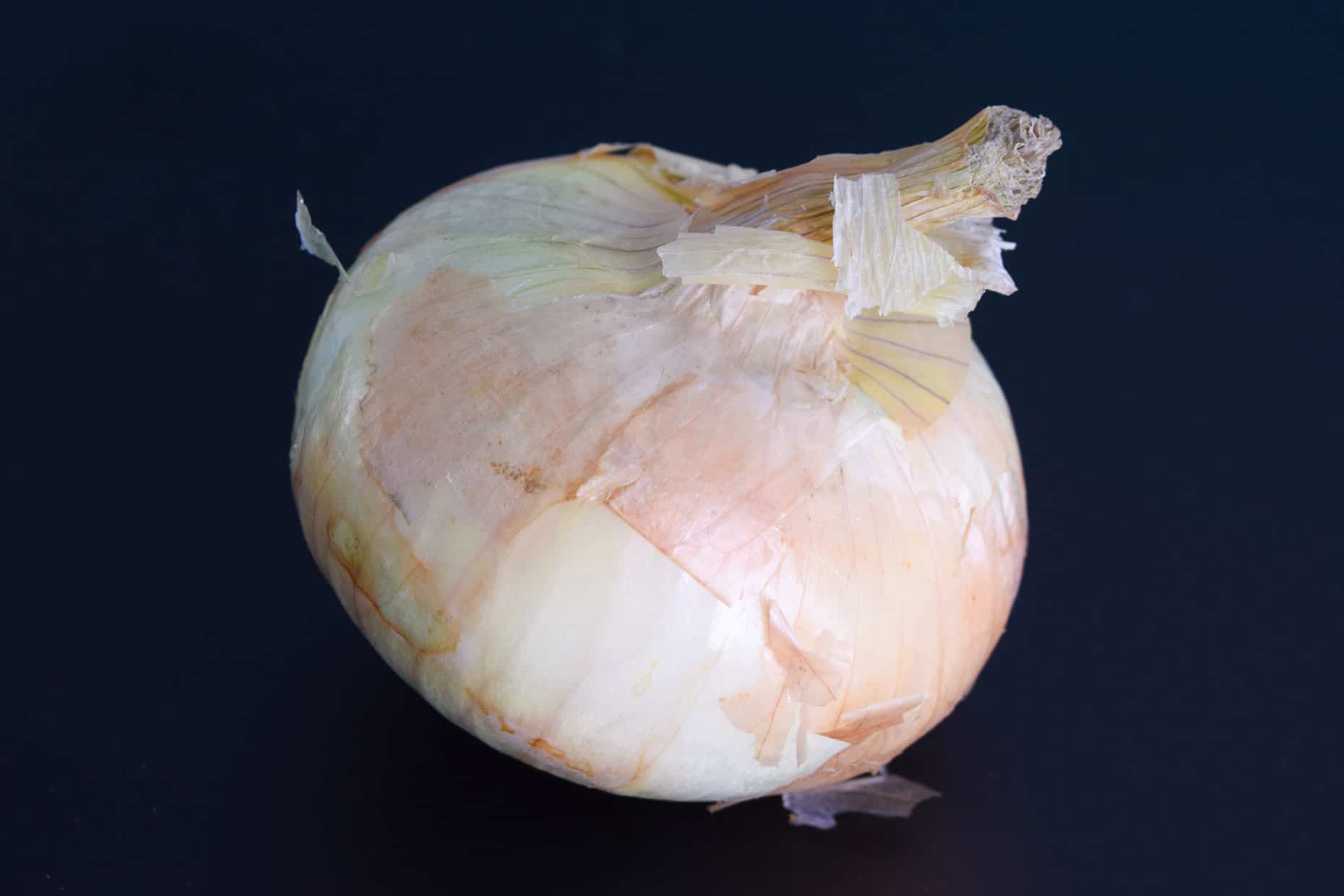
Yay!! It's finally Vidalia onion season! I probably could have classified this as just sweet onions but I love Vidalia onions enough to give them their own shout out! We eat a lot of onions in general but during Vidalia onion seasons our consumption easily triples. I just love their mild, sweet flavor!
- How to choose them:
- Choose onions with smooth, dry skin and tightly closed necks.
- Choose onions with papery, bright, shiny skin.
- Avoid onions with soft spots, dark spots under the skin or sprouts.
- How to store them:
- Store in a cool, dark, spot such as your pantry for 1-2 weeks. Vidalia onions won't last as long as regular onions due to their higher water and sugar content so be sure to store them properly!
- How to prepare them:
That's it!! I hope you enjoyed this month's produce guide! Plan ahead by checking out next month's guide!

Alina | Cooking Journey Blog says
It is so important to eat seasonal produce to get the most of it, great guide! Thanks for including our blueberry cheesecake.
cutsandcrumbles says
Thanks, Alina! I agree! And the cheesecake looks amazing!! 🙂